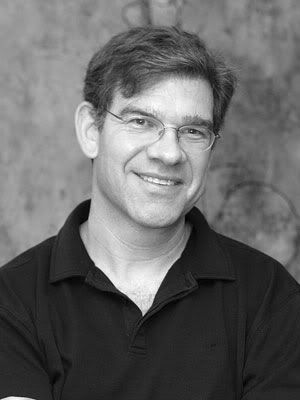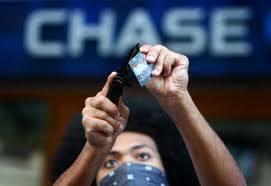Occupy Wall Street Raises $300,000 [LATEST UPDATES]
By VERENA DOBNIK, The Associated Press
NEW YORK (AP) -- The Occupy Wall Street movement has close to
$300,000, as well as storage space loaded with donated supplies in lower
Manhattan. It stared down city officials to hang on to its makeshift
headquarters, showed its muscle Saturday with a big Times Square
demonstration and found legions of activists demonstrating in solidarity
across the country and around the world.
(CLICK HERE OR SCROLL DOWN FOR LATEST UPDATES)
Could this be the peak for loosely organized protesters, united less
by a common cause than by revulsion to what they consider unbridled
corporate greed? Or are they just getting started?
There are signs of confidence, but also signs of tension among the
demonstrators at Zuccotti Park, the epicenter of the movement that began
a month ago Monday. They have trouble agreeing on things like whether
someone can bring in a sleeping bag, and show little sign of uniting on
any policy issues. Some protesters eventually want the movement to rally
around a goal, while others insist that isn't the point.
"We're moving fast, without a hierarchical structure and lots of
gears turning," said Justin Strekal, a college student and political
organizer who traveled from Cleveland to New York to help. "... Egos are
clashing, but this is participatory democracy in a little park."
Even if the protesters were barred from camping in Zuccotti Park, as
the property owner and the city briefly threatened to do last week, the
movement would continue, Strekal said. He said activists were working
with legal experts to identify alternate sites where the risk of getting
kicked out would be relatively low.
Wall
Street protesters are intent on hanging on to the momentum they gained
from Saturday's worldwide demonstrations, which drew hundreds of
thousands of people, mostly in the U.S. and Europe. They're filling a
cavernous space on Broadway a block from Wall Street with donated goods
to help sustain their nearly month-long occupation of the private park
nearby.
They've amassed mounds of blankets, pillows, sleeping bags, cans of
food, medical and hygienic supplies - even oddities like a box of
knitting wool and 20 pairs of swimming goggles (to shield protesters
from pepper-spray attacks). Supporters are shipping about 300 boxes a
day, Strekal said.
The space was donated by the United Federation of Teachers, which has offices in the building.
Close to $300,000 in cash also has been donated, through the
movement's website and by people who give money in person at the park,
said Bill Dobbs, a press liaison for Occupy Wall Street. The movement
has an account at Amalgamated Bank, which bills itself as "the only 100
percent union-owned bank in the United States."
Strekal said the donated goods are being stored "for a long-term occupation."
"We are unstoppable! Another world is possible!" Kara Segal and other
volunteers chanted in the building lobby as they arrived to help unpack
and sort items, preparing them to be rolled out to the park.
While on the streets, moments of madness occasionally erupt in the
protest crowd - accompanied by whiffs of marijuana, grungy clothing and
disarray - order prevails at the storage site.
It doubles as a sort of Occupy Wall Street central command post, with
strategic meetings that are separate from the "general assembly"
free-for-alls in the park. One subject Sunday was data entry: protesters
are working to get the names and addresses of donors into a databank,
to thank them for their gifts.
The movement has become an issue in the Republican presidential
primary race and beyond, with politicians from both parties under
pressure to weigh in.
President Barack Obama referred to the protests at Sunday's
dedication of a monument for Martin Luther King Jr., saying the civil
rights leader "would want us to challenge the excesses of Wall Street
without demonizing those who work there."
Many of the largest of Saturday's protests were in Europe, where
those involved in long-running demonstrations against austerity measures
declared common cause with the Occupy Wall Street movement. In Rome,
hundreds of rioters infiltrated a march by tens of thousands of
demonstrators, causing what the mayor estimated was at least euro1
million ($1.4 million) in damage to city property.
U.S. cities large and small were "occupied" over the weekend:
Washington, D.C., Fairbanks, Alaska, Burlington, Vt., Rapid City, S.D.,
and Cheyenne, Wyo. were just a few. In Cincinnati, protesters moved
their demonstration out of a park after hearing that a couple was
getting their wedding photos taken there - but the bride and groom ended
up seeking them out for pictures.
More than 70 New York protesters were arrested Saturday, more than 40
of them in Times Square. About 175 people were arrested in Chicago
after they refused to leave a park where they were camped late Saturday,
and there were about 100 arrests in Arizona - 53 in Tucson and 46 in
Phoenix - after protesters refused police orders to disperse. About two
dozen people were arrested in Denver, and in Sacramento, Calif.,
anti-war activist Cindy Sheehan was among about 20 people arrested after
failing to follow police orders to disperse.
Activists around the country said they felt that Saturday's protests energized their movement.
"It's an upward trajectory," said John St. Lawrence, a Florida real
estate lawyer who took part in Saturday's Occupy Orlando protest, which
drew more than 1,500 people. "It's catching people's imagination and
also, knock on wood, nothing sort of negative or discrediting has
happened."
St. Lawrence is among those unconcerned that the movement has not
rallied around any particular proposal, saying "policy is for leaders to
come up with."
"I don't think the underlying theme is a mystery," he said. "We saw
what the banks and financial institutions did to the economy. We bailed
them out. And then they went about evicting people from their homes," he
said. He added that although he is not in debt and owns his own home,
other people in his neighborhood are suffering and "everyone's interests
are interconnected."
In Richmond, Va., about 75 people gathered Sunday for one of the
"general assembly" meetings that are a key part of the movement's
consensus-building process. Protester Whitney Whiting, a video editor,
said the process has helped "gather voices" about Americans discontent,
and that she expects it will eventually take the movement a step
further.
"In regards to a singular issue or a singular focus, I think that
will come eventually. But right now we have to set up a space for that
to happen," Whiting said.
Some U.S. protesters, like those in Europe, have their own causes.
Unions that have joined forces with the movement have demands of their
own, and on Sunday members of the newly formed Occupy Pittsburgh group
demanded that Bank of New York Mellon Corp. pay back money they allege
it overcharged public pension funds around the country.
New York's attorney general and New York City sued BNY Mellon this
month, accusing it of defrauding clients in foreign currency exchange
transactions that generated nearly $2 billion over 10 years. The company
has vowed to fight the lawsuit and had no comment about the protesters'
allegation about pensions.
Lisa Deaton, a tea party leader from southern Indiana, said she sees
some similarities between how the tea party movement and the Wall Street
protests began: "We got up and we wanted to vent."
But the critical step, she said, was taking that emotion and focusing it toward changing government.
The first rally she organized drew more than 2,500 people, but
afterward, "it was like, `What do we do?'" she said. "You can't have a
concert every weekend."
The Wall Street protesters' lack of leadership and focus on
consensus-building has help bring together people with different
perspectives, but it's also created some tension.
"Issues are arising - like who is bringing in sleeping bags without
permission," said Laurie Dobson, who's been helping a self-governed
"working group" called "SIS" - for Shipping, Inventory and Supplies.
Sleeping bags were among items cited by Zuccotti Park's owner,
Brookfield Properties, as not allowed on the premises - along with
tents, tarps and other essentials for the encampment. By Sunday, all
those items were back.
Strekal didn't see that as a problem. Protesters could do it, he said, "because we're winning the PR war."
Around his neck hangs a tiny silver Liberty Bell - a symbol of American independence given to him by a fellow activist.
____









 As
part of their intelligence-gathering operation, the group gained access
to a listserv used by Occupy Wall Street organizers called
September17discuss. On September17discuss, organizers hash out tactics
and plan events, conduct post-mortems of media appearances, and trade
the latest protest gossip. On Friday, Ryan leaked thousands of
September17discuss emails to conservative blogger Andrew Breitbart, who
is now using them to try to smear Occupy Wall Street as an anarchist
conspiracy to disrupt global markets.
As
part of their intelligence-gathering operation, the group gained access
to a listserv used by Occupy Wall Street organizers called
September17discuss. On September17discuss, organizers hash out tactics
and plan events, conduct post-mortems of media appearances, and trade
the latest protest gossip. On Friday, Ryan leaked thousands of
September17discuss emails to conservative blogger Andrew Breitbart, who
is now using them to try to smear Occupy Wall Street as an anarchist
conspiracy to disrupt global markets.



